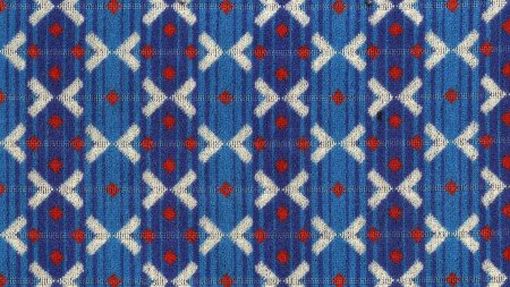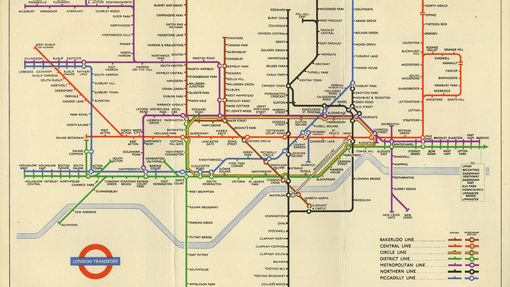
Enid Marx: pioneer of pattern
Introduction
Enid Marx (1902-1998) was an influential artist and designer whose wide-ranging work included textile design, printmaking, book illustration and even postage stamps.
Among her many clients were London Transport (LT), who commissioned her to design moquette seating fabric for Underground trains and posters promoting the network.
Marx was born in London and was a distant relative of German philosopher and theorist Karl Marx. She developed a talent for art at Roedean school and studied at the Central School of Arts and Crafts and the Royal College of Art (RCA).
Though she left the RCA without a diploma, she was part of an ‘outbreak of talent’ that included other multi-talented artists Edward Bawden, Eric Ravilious and Barnett Freedman, all of whom produced work for LT.
Designing moquette
In the mid-1920s, Marx became a textile designer with Barron and Larcher, before establishing her own studio. She became widely known for her hand-blocked textiles and patterned papers and in the 1930s was commissioned by Christian Barman, LT’s publicity officer, to design woollen moquette seating fabric. Barman worked closely with LT’s Chief Executive, Frank Pick, who oversaw a strong design vision to all aspects of LT’s network.
Previously, moquette seating fabric had largely been designed in-house by the mills who manufactured it. Marx, along with Marion Dorn and Paul Nash, was among the first designers to specifically design moquette for LT.
Marx was advised that the material had to ‘look fresh at all times, even after bricklayers had sat on it’, as well as not being too dazzling as it was destined for moving vehicles. The first three fabrics she designed – called ‘Belsize’, ‘Bushey’ and ‘Brent’ – combined her characteristic use of pattern with a modern feel in keeping with LT’s wider approach to design.
All three placed an emphasis on being practical by using muted colours, with Marx recalling in a later lecture to fellow textile designers that: ‘We all thought at first that the best way of disguising dirt was to use colours which would more or less tone in with the dirt’.
A bolder approach
Marx soon realised that a bolder approach was more practical. She found that ‘the best method of ensuring the seats would look clean after a period of use was to use strongly contrasting tones and rather brilliant colour’.
This was reflected in her next moquette, called ‘Chevron’, that combined bold diagonals and squares in strong tones of red and green. These colours also coordinated with the green metalwork and red leather armrests of the train carriages.
In 1944, Marx was elected to the Faculty of Royal Designers for Industry, reflecting her ability in practical industrial design and the respect of her peers. Marx was commissioned to design more moquette for LT, with ‘Shield’ perhaps her best known and liveliest design. It was used on refurbished 1938 Tube stock trains in the late 1940s, using the same colours as ‘Chevron’ but breaking away from the straight lines of her previous LT patterns.
A successful career
Over the succeeding decades, Marx continued a successful career as a freelancer, as well as sharing her skill through teaching, including as head of the department of Dress, Textiles and Ceramics at Croydon College of Art. She was again commissioned by LT to design two posters in 1957 that exhibited her skills as a printmaker, each featuring a wood engraving.
Marx’s final commission by LT was a 1965 poster promoting the Science Museum as a destination, focusing on illustrations of early experiments in aeronautical technology. The style and subject matter reflect Marx’s wide-ranging interest in the quirky and the popular. Marx and her partner, the historian Margaret Lambert, amassed a large collection of English folk art, publishing books on the subject and campaigning for an associated national museum. Much of their collection is now held at Compton Verney Art Gallery & Park in Warwickshire.
In her own words
Known as ‘Marco’ to her partner and friends, Enid Marx pursued a singular yet varied vision of her art, remarking that her ‘career has always just happened’. She combined modernism with an appreciation of the popular and traditional, reflected in her textiles, posters, woodcuts, engravings, linocuts, packaging, book jackets and illustrations, calendars and greeting cards.
You can hear more about Enid Marx’s career and work for London Transport in her own words in this oral history interview:


























